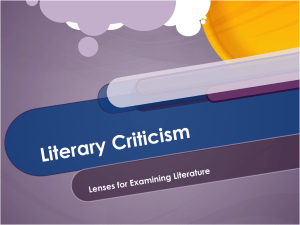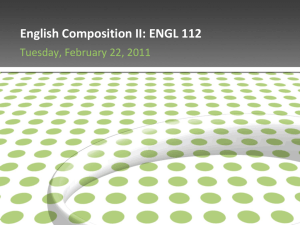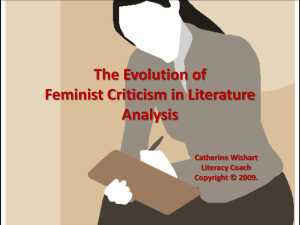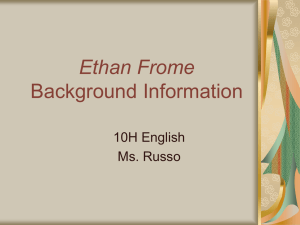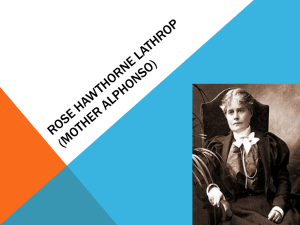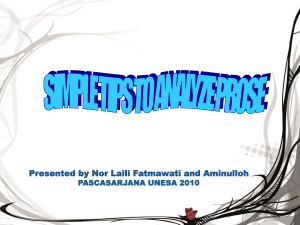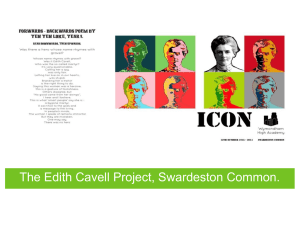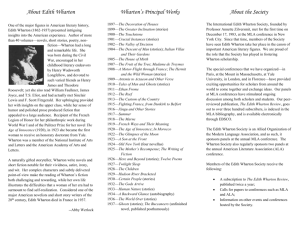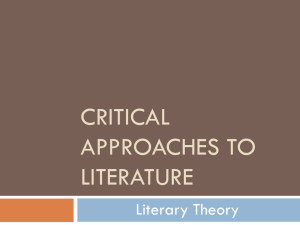here
advertisement
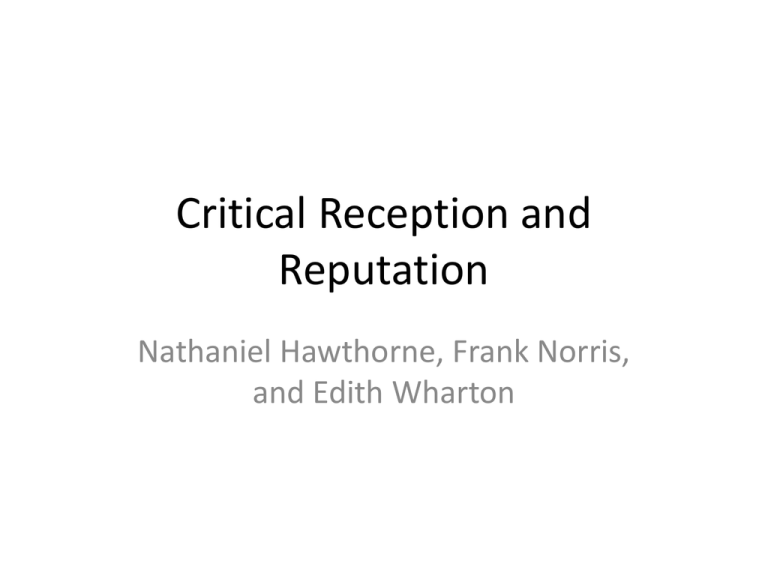
Critical Reception and Reputation Nathaniel Hawthorne, Frank Norris, and Edith Wharton Broad Trends in American Literary Criticism • Beginnings through the 1920s – Textual criticism and book history approaches (still important): editions and their quality, differences among editions, reception history – “Appreciation” (book reviews) • Judging the plot and characters • Promoted morality and maintained the bounds of good taste? • True to life? Broad Trends, 1920s-1950s • Techniques derived from (Russian) formalism: elements of structure, symmetry, and the functions of various elements in the text • Enabled interpretation of fragmented modernist texts • Techniques derived from (French) symbolistes and representations of the unconscious – – – – Freud and Jung (archetypes and archetypal symbolism) Mythic patterns in literature Classical and Christian symbolism The “myth and symbol” school • Rediscovery of Herman Melville at this time Broad Trends, 1930s-1960s • 1930s: Marxist and socially conscious criticism judged literature based on its realism and its representations of class struggle (Granville Hicks). Work was judged on its political content. • 1940s-1960s: New Criticism (Cleanth Brooks, Wimsatt and Beardsley) was a type of formalism that focused on the unity of individual work of art without reference to external information. New Criticism saw political content as antithetical to art. Broad Trends, 1970s-1990s • Influential French theories: Deconstruction, Semiotics, Structuralism • Reader-response theory • Psychoanalytic theory • Feminist theory—roles of women, women authors, and gender politics within work • Class, race, and gender—reversed the trend away from ignoring the politics of a work; rediscovery of minority and women authors ignored by “classic” New Critics. Broad Trends, 1990s - 2010 • Postcolonial theory: colonialism and imperialism and their legacies of oppression (Edward Said, Gayatri Spivak); voices silenced (the subalterns) by dominant forces. • Cultural studies (Stuart Hall, Antonio Gramsci): study and critique of power relations within a given culture. • Gender criticism How does this relate to the three authors considered here? • Nathaniel Hawthorne • Frank Norris • Edith Wharton Hawthorne • Nina Baym, The Shape of Hawthorne’s Career • Hawthorne considered a great writer of “sketches” in his time. • 1920s on: the “myth and symbol” aspect of his work appealed to New Critics. • 1970s on: strong female characters appealed to feminist critics. • 1990s on: interest in Hawthorne, representations of race in his fiction, etc. Frank Norris’s Reputation • Through the 1920s: praised for his bold, raw representation of America. • Fell into a decline during modernism. • Late 1950s and early 1960s: rediscovery of Norris’s symbols and structures—a Norris revival • 1970s-1990s: Interest in Norris continues for his presentation of a literary West and his problematic conceptions of race. Edith Wharton’s Reputation • Considered a great novelist during her lifetime, although her critical reputation declined with the rise of modernism and her post-1920 books. • 1930s: Attacked by Marxist critics for writing about the upper class. • 1950s: Considered to be an imitator of Henry James, who (being male) was a greater writer; also, EW was attacked for being “cruel” to her characters (Lionel Trilling) Edith Wharton’s Reputation • 1975: First modern biography of EW and a subsequent rise in interest in her work. • 1970s-1980s: Feminist critics start rereading Wharton for her critique of woman’s place in a restrictive culture. • 1990s- on: Continuing interest from feminist critics but also postcolonial criticism, race criticism, etc.
